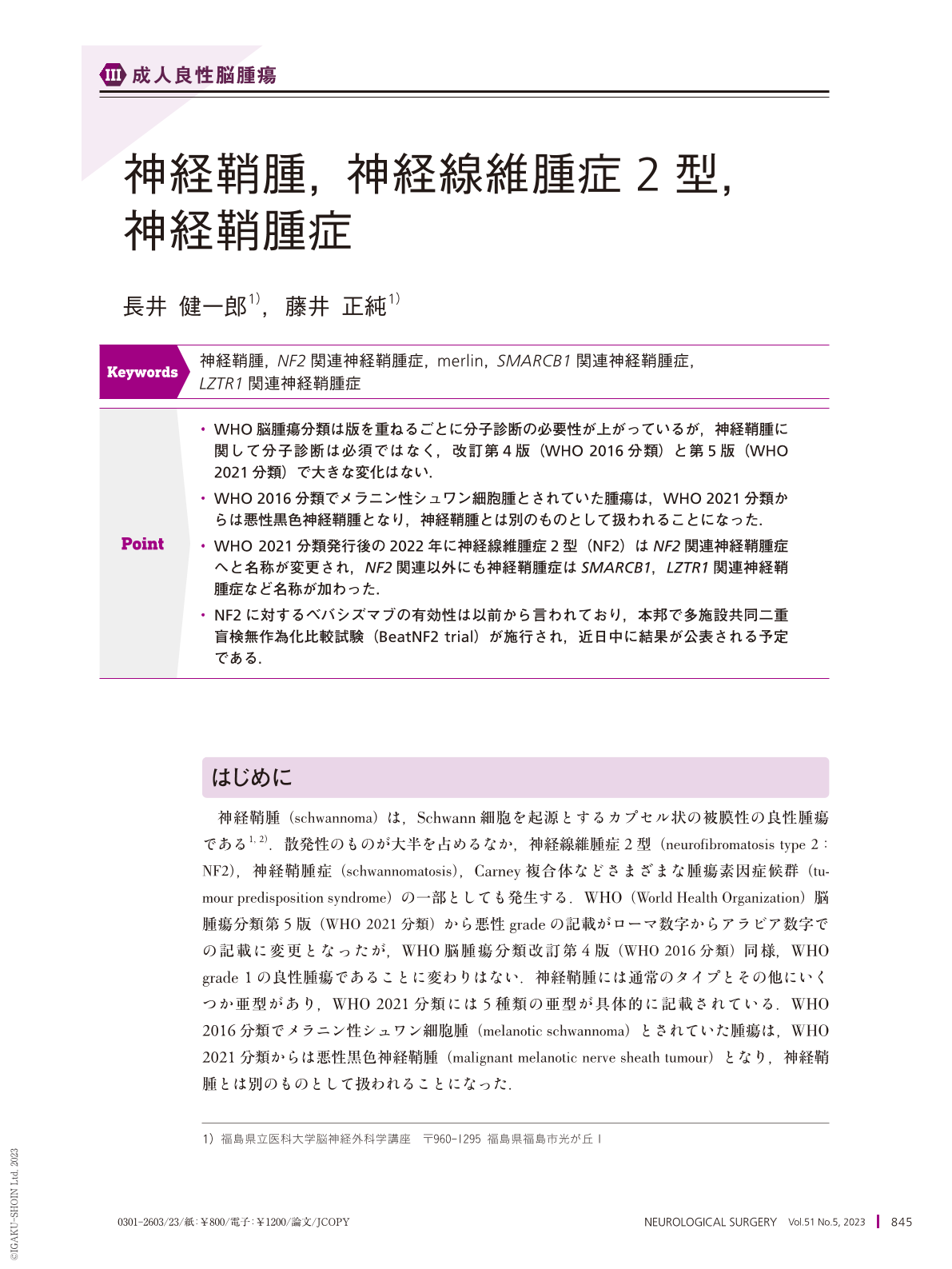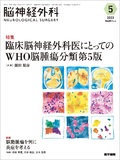Japanese
English
- 有料閲覧
- Abstract 文献概要
- 1ページ目 Look Inside
- 参考文献 Reference
Point
・WHO脳腫瘍分類は版を重ねるごとに分子診断の必要性が上がっているが,神経鞘腫に関して分子診断は必須ではなく,改訂第4版(WHO 2016分類)と第5版(WHO 2021分類)で大きな変化はない.
・WHO 2016分類でメラニン性シュワン細胞腫とされていた腫瘍は,WHO 2021分類からは悪性黒色神経鞘腫となり,神経鞘腫とは別のものとして扱われることになった.
・WHO 2021分類発行後の2022年に神経線維腫症2型(NF2)はNF2関連神経鞘腫症へと名称が変更され,NF2関連以外にも神経鞘腫症はSMARCB1,LZTR1関連神経鞘腫症など名称が加わった.
・NF2に対するベバシズマブの有効性は以前から言われており,本邦で多施設共同二重盲検無作為化比較試験(BeatNF2 trial)が施行され,近日中に結果が公表される予定である.
Schwannomas are benign capsular tumors originating from Schwann cells. Although the majority are sporadic, they also occur within tumor predisposition syndromes, such as neurofibromatosis type 2, schwannomatosis, and Carney complex. Since the 5th edition of the World Health Organization(WHO)Classification of Tumors of the Central Nervous System was published, the description of grades has changed from Roman numerals to Arabic numerals. However, as in the 4th edition, it is still a WHO grade 1 benign tumor. There are several other subtypes of schwannomas in addition to the conventional type, and five subtypes have been specifically described in the 5th edition. “Melanocytic Schwannoma” in the 4th edition is now called “malignant melanotic nerve sheath tumor” in the 5th edition and is classified as a different tumor from schwannoma. Although the 5th edition places greater emphasis on genetic diagnoses, it is not essential for diagnosing schwannomas, and histological and clinical diagnoses remain equally crucial. Furthermore, after publication of the 5th edition in September 2022, an international consensus group renamed “neurofibromatosis type 2” as “NF2-related schwannomatosis.” This article describes the shifts between the 4th to the 5th edition of the WHO Classification of Tumors of the Central Nervous System, along with additional clarifications, and offers the latest insights into treatment modalities for schwannomas and NF2.

Copyright © 2023, Igaku-Shoin Ltd. All rights reserved.


